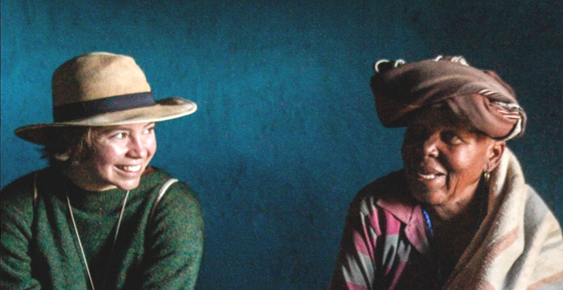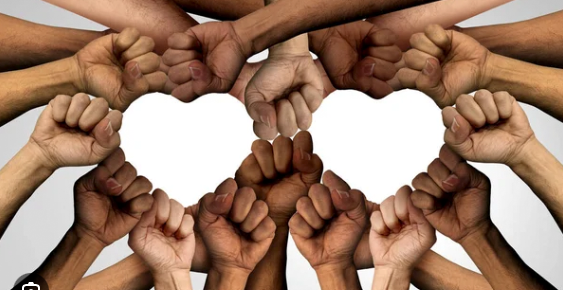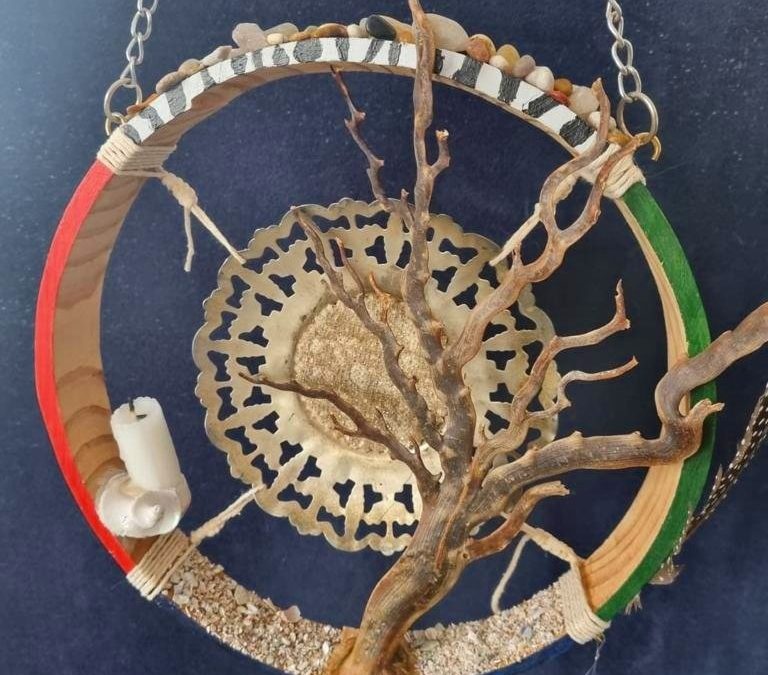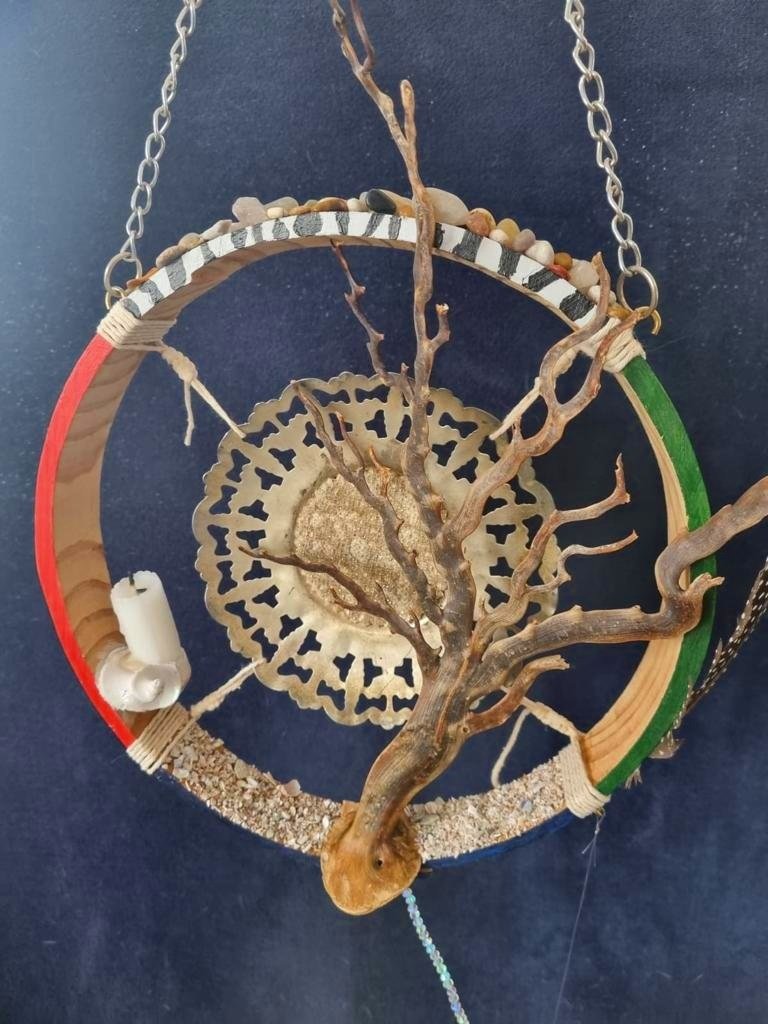
Gold Beyond the Edge
Dear Earth Beings,
Here is something for you to investigate in this moment, or perhaps for the rest of your life…
My spiritual Grandfather, Baba Credo Mutwa – High Sanusi, Sangoma and Spiritual Elder of the Zulu people was the great record keeper of the ancient stories of the African people. He wrote the first African Bible which speaks very clearly and articulately about the genesis of humanity.
Baba would teach through storytelling. In these stories was an invitation to the mystery to self-awareness and self-knowing. He once told me this story…
“The first creators and harvesters of Gold were initiated woman. Only initiated woman knew the secret of seeding and harvesting Gold.”
First, let us not forget that (at the time) the largest military manoeuvre occurred on planet earth to secure a certain volume of Gold by colonising forces. Before we had the miners, machinery and industrial equipment that would invade our beautiful mother and extract from her this pure substance we call Gold, without permission, for profit and benefit of self, for elevation and power, before all that, women would enter Mother Earth with their sacred ways. They would seed, cultivate and then harvest Gold in minuscule proportions – as medicine.
What was that activity?
It was a secret only known to initiated woman. I do not have the answer. I have been working on this ever since I heard this story.
As we are working through the Grounded Earth Advanced Training Module at BEZA, who or what is this Mother? This Gold that we adorn our shrines with? What is the seeding of your pea inside your bowl of soil and the harvesting of this life – the secret only known to the Yin, Feminine element? What were the initiated women doing in Mother Earth? How were they seeding and harvesting Gold. What is the secret of self-knowing behind the story?
The thin layer of soil that surrounds the Earth is 500 Billionths of the distance from the center to the edge of the Earth – soil’s thickness is 0,000000005% of Earth’s radius. That is how thin the soil layer is!
Who cares how thin the soil is?
You stand on a fraction of Earth’s spherical circumference – a fraction of the 500 billionths. On your feet you stand tall. The energies of this universe travel through you to the center of the Earth and through the center of the Earth into the heavens. You are a specific kind of conduit of energy. The conduit functions when you stand firmly in place, in the moment, on the very ground only you occupy right now. What is the functioning of your conduit – what is your Earthly function?
All life as we know it lives and occupies time and space on this very thin cuticle that surrounds Mother Earth. Every creature around you, every object, is definable or knowable by its edge. Without the edge we cannot see where it begins – what it is. That very edge gives you and the thing – the object or creature – the cognition of its particular kind of existence.
You have an edge. It is protecting, serving, creating definition and holds the definition of who it is you are. We do not pay attention to the edge. If the edge of things was not there, if your edge was not there, what would there be? Who would you be? That is the secret. Who are you without the edge?
Our thoughts have edges. Our stories have edges. Our way in the world manufactures, creates and proceeds through this life, acknowledging, responding and resisting, and integrating with all kinds of edges. Yet in this modern society, and new-age movement, we are all talking about oneness. What is this so called Oneness? Oneness of what?
All the work we do here at BEZA – all of it, is to invite you to the edge of what it is that you believe is creating your definition and purpose in this space and time that you are occupying right now – in this moment. There is a vitality to the function that only you can perform because only you are located on this membrane, as a membraned being, fulfilling a unique kind of function in that location. What is that function and in relation to who or what?
Only when the edge disappears may we know what that function is – what or who we are serving. When we go beyond the edge we connect to all of it, to it all, and become it. As a result of the disappearance of the membrane, we know something (even if it is only that which is waiting just beyond the edge of what we know). In that which we have suddenly woken up to beyond our borders we discover we have a particular function related to what is complete and whole. We now have relevancy, and pay homage to the whole and serve the whole for we see we are part of the whole.
When we do not know the whole, we have no idea of who it is we are. We do not know our edge and so therefore we do not know our function. Not knowing our function, our purpose, what are we doing, actually? What are we practicing, protecting and serving? What is our particular form and function within and in relation to the whole?
It is only when going into the edge, and in seeing the edge, that we have this profound opportunity of letting go of the edge – to see the edgeless, wholeness of this life. When we become and immerse ourselves in the no-edge, only then can we really embrace and know what and how the edge serves. Do you know really know your edge? If you do, you would know your edgeless-ness – your wholeness.
Second, let us remember we have an aura. Aura means ‘lights of gold’. The symbol for gold is Au. Ra is light or ray. Our auras connect, merge and become one with the auras of all beings. Is this what Baba Mutwa is pointing to when he says, “The first creators and harvesters of Gold were initiated woman. Only initiated woman knew the secret of seeding and harvesting Gold.”
Let us do it. Let us go to the edge. In the Earth Module training offered at BEZA we encourage apprentices to go to a tree in the morning, in the afternoon or once a week. They are going to the edge. The collection of all the story ritual items that they have been putting into their bowl is going to the edge. Coming to meditation in the morning, is coming to the edge. Coming to Community Council is coming to the edge.
What edge are you going to? Whatever edge it is just go there – however you want to do that.
See what is there. And then go beyond – let it go.
You will find your true self, peace and purpose on the other side.
Nangaku











